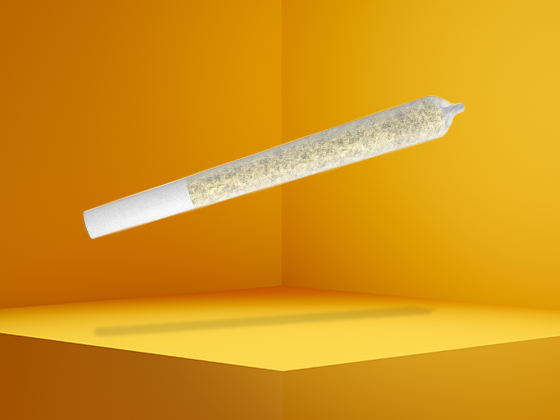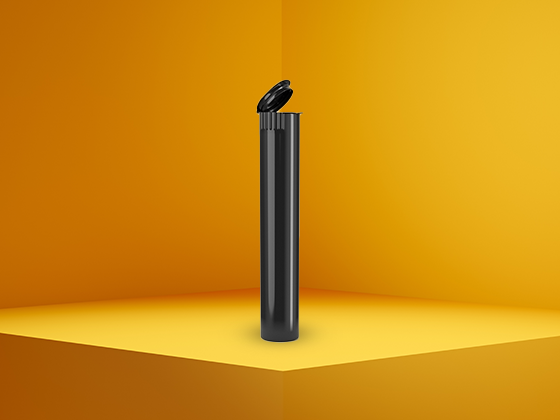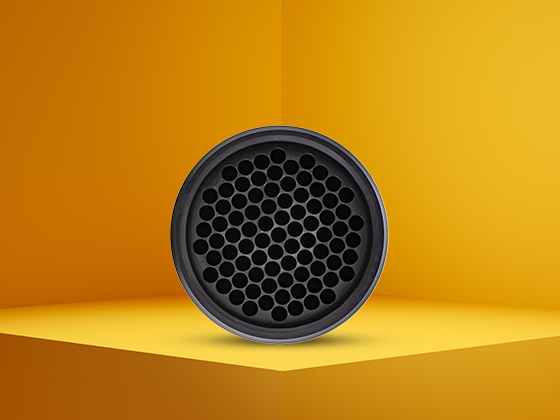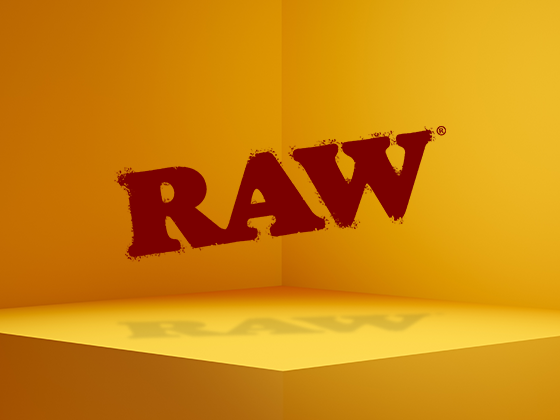Questions
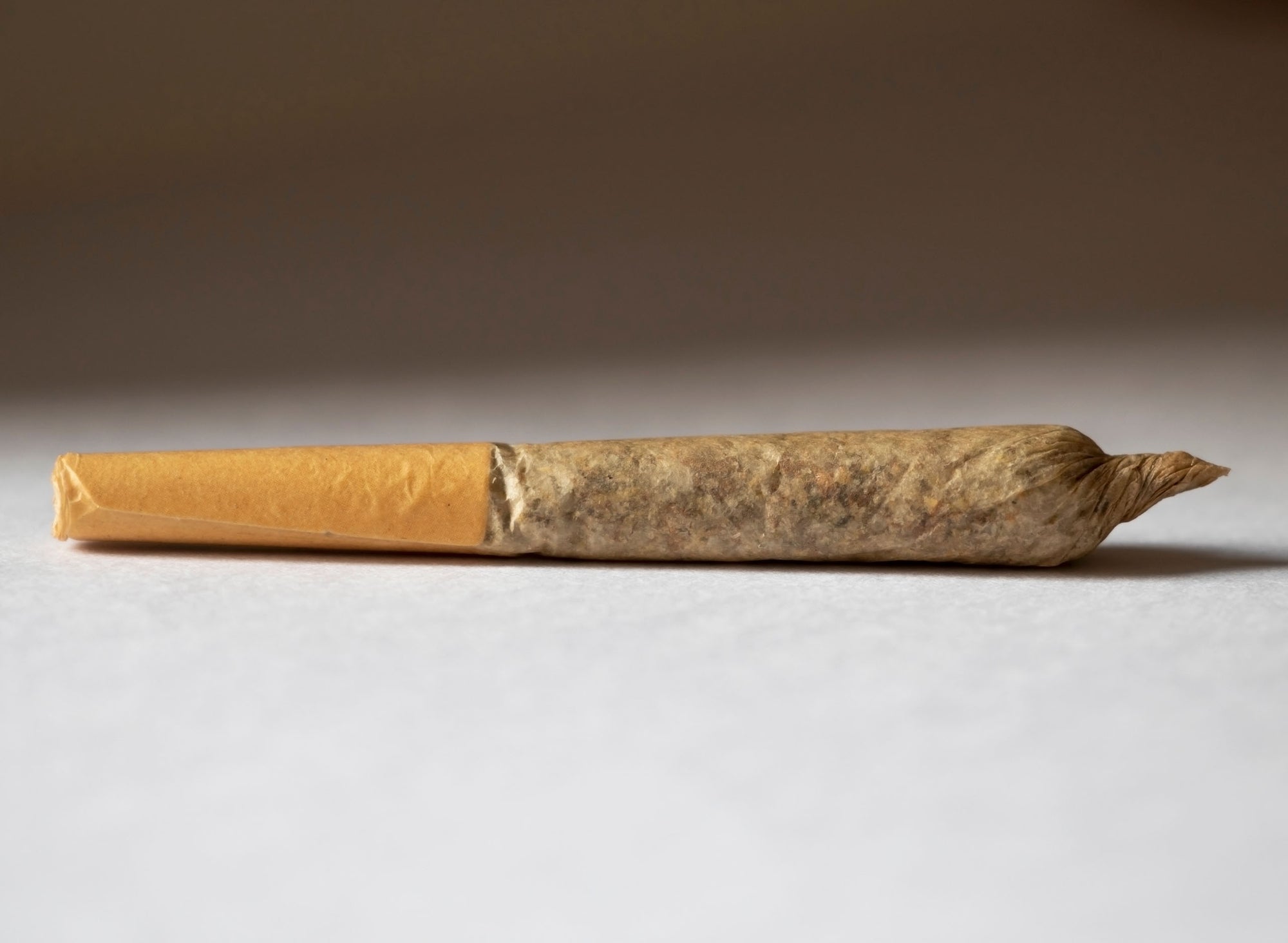
compliance
Are RAW Organic Papers Safe? Exploring the Ethylene Oxide Controversy
Table of Contents
Understanding RAW Organic Papers: Composition and Claims
The Ethylene Oxide Controversy: What You Need to Know
Testing Standards and Regulatory Oversight
Alternatives to RAW Papers for Health-Conscious Consumers
Making Informed Choices: Balancing Tradition and Safety
Are RAW Organic Papers Safe? Exploring the Ethylene Oxide ControversyThe cannabis and tobacco accessory market has seen significant growth in recent years, with RAW rolling papers emerging as one of the most popular brands among consumers. Known for their unbleached, natural appearance and marketing claims of organic materials, RAW papers have developed a loyal following. However, recent controversies surrounding ethylene oxide in RAW papers have raised questions about their safety and organic status.Understanding RAW Organic Papers: Composition and ClaimsRAW organic papers are marketed as all-natural rolling papers made from unbleached plant fibers. According to the brand, these papers are created using organic hemp and processed without chlorine bleach or other chemicals typically found in conventional rolling papers. This natural approach has been a key selling point for health-conscious consumers looking to avoid potentially harmful additives.The composition of RAW papers typically includes:
Unrefined hemp fibers
Natural plant gum (typically Arabic gum) as an adhesive
No added chemicals or dyes
As explained in this comprehensive guide to RAW papers, the brand has built its reputation on these natural credentials and transparent manufacturing processes.The Ethylene Oxide Controversy: What You Need to KnowDespite RAW's claims of organic and natural production, concerns have emerged regarding the potential presence of ethylene oxide in their papers. Ethylene oxide is a gas used for sterilization in many industries, including medical equipment and some food products. It's classified as a carcinogen by multiple health organizations, including the International Agency for Research on Cancer.The controversy stems from allegations that RAW papers might undergo ethylene oxide sterilization to eliminate microbial contamination before packaging. If true, this would contradict the brand's organic claims, as ethylene oxide sterilization is not permitted in certified organic products in many jurisdictions.Highlight: The core of the controversy lies in whether ethylene oxide sterilization leaves harmful residues in the papers that could be inhaled when smoked, potentially exposing users to carcinogenic compounds.Industry Response and TestingIn response to these concerns, many consumers have begun exploring different types of RAW papers or alternatives altogether. RAW has publicly denied using ethylene oxide in their manufacturing process, but the controversy has prompted increased scrutiny of rolling paper production methods industry-wide.Testing Standards and Regulatory OversightOne challenge in addressing these concerns is the limited regulatory oversight of rolling paper production. Unlike food or pharmaceutical products, rolling papers often fall into regulatory gray areas with minimal testing requirements.Some third-party testing has been conducted on various rolling paper brands, including RAW, with mixed results. These tests typically look for:
Heavy metals
Pesticide residues
Chemical additives
Potential carcinogens
For consumers concerned about potential contaminants, looking for papers that undergo third-party testing and publish their results can provide additional peace of mind. Some enthusiasts have also turned to our selection of OCB cones as an alternative, which many users find to be manufactured with rigorous quality control standards.Alternatives to RAW Papers for Health-Conscious ConsumersFor those concerned about the ethylene oxide controversy surrounding RAW papers, several alternatives exist in the market:Other Organic and Natural OptionsSeveral brands offer unbleached, natural rolling papers that compete directly with RAW organic papers. These include OCB Organic, Elements, and Pure Hemp, among others. Each has its own manufacturing processes and quality control standards.As detailed in this analysis of RAW Black papers, even within the RAW family, different product lines may use varying production methods and materials.Pre-Rolled ConesPre-rolled cones eliminate the need for rolling skills and often come from the same manufacturers as flat papers. Many consumers find that RAW cones provide the same experience as the flat papers but in a more convenient format. These products are subject to the same considerations regarding materials and processing.Alternative Consumption MethodsSome consumers have moved away from combustion entirely, opting for vaporizers or edibles to avoid any potential issues with rolling papers. This approach eliminates concerns about paper composition altogether.Making Informed Choices: Balancing Tradition and SafetyThe ethylene oxide controversy highlights the importance of transparency in manufacturing processes for cannabis accessories. While definitive evidence regarding ethylene oxide in RAW papers remains limited, the controversy has sparked important conversations about safety standards in the industry.For consumers looking to make informed choices:
Research brands that provide detailed information about their manufacturing processes
Look for third-party testing results when available
Consider papers that have organic certification from reputable organizations
Explore different rolling techniques that might reduce paper consumption
As the industry evolves, increased consumer demand for transparency will likely drive more rigorous testing and clearer labeling practices. Until then, staying informed about potential concerns and exploring various options remains the best approach for health-conscious consumers.Whether you choose to continue using RAW organic papers or explore alternatives like those available through specialized retailers, understanding the manufacturing processes behind your smoking accessories empowers you to make choices aligned with your personal health priorities and values.
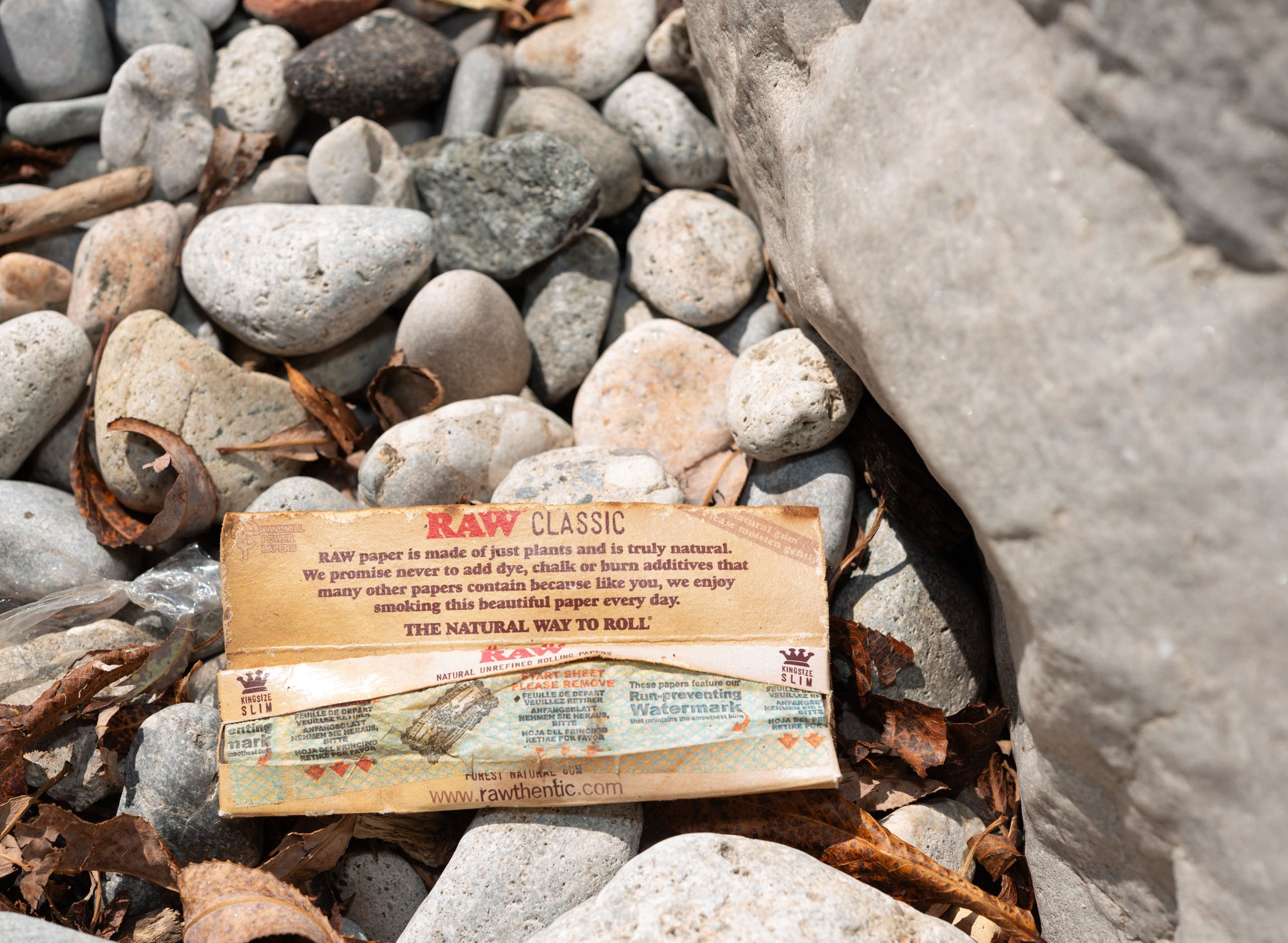
compliance
Is It Safe to Smoke the Warning Paper in RAW Rolling Papers?
Table of Contents
What Is the Warning Paper in RAW Rolling Papers?
Composition and Safety Concerns
RAW's Official Stance on Warning Papers
Better Alternatives to Smoking Warning Papers
User Experiences and Reports
Safety Recommendations for RAW Paper Users
Is It Safe to Smoke the Warning Paper in RAW Rolling Papers?Many RAW rolling paper users have wondered if they can smoke the warning paper found in RAW packs when they run out of regular rolling papers. This question appears frequently in smoking communities, with curious users asking: can you smoke the warning paper in RAW pack? While the impulse to use every available resource is understandable, there are important safety and quality considerations to address before attempting to smoke these warning inserts.What Is the Warning Paper in RAW Rolling Papers?Every pack of RAW rolling papers contains a warning paper that provides legal disclaimers, usage instructions, and brand information. These papers are typically a different color or texture from the actual rolling papers and serve primarily as informational inserts rather than smoking materials.According to comprehensive guides on RAW papers, the actual rolling papers are specifically engineered for smoking, while warning papers serve a completely different purpose. The warning papers are designed to communicate important information to consumers, not as smoking accessories.Composition and Safety ConcernsThe composition of warning papers differs significantly from rolling papers in several important ways:
Ink content: Warning papers contain printed text with inks that are not designed to be combusted and inhaled
Paper quality: They are typically made from standard paper rather than the specialized hemp, rice, or flax materials used in rolling papers
Chemical treatments: Warning papers may contain chemicals used in standard paper production that could be harmful when burned and inhaled
Thickness: They are generally thicker than rolling papers, potentially burning hotter and more unevenly
If you're wondering can you smoke RAW warning paper, the answer involves understanding these differences. RAW rolling papers themselves are designed specifically for smoking, with controlled burning rates and minimal additives.Highlight: Warning papers contain inks, potential chemical treatments, and paper materials not designed for safe combustion and inhalation.RAW's Official Stance on Warning PapersRAW, as a company focused on natural smoking products, has not officially endorsed smoking their warning papers. Their business model centers on providing high-quality, purpose-made rolling papers and smoking accessories that meet specific safety standards.The company invests considerable resources in developing papers specifically for smoking. As explored in this guide to RAW papers, the brand emphasizes natural ingredients and specialized manufacturing processes for their actual smoking products.For those wondering can you use the warning paper in RAW papers for smoking, the manufacturer's implicit stance through their product design suggests it's not an intended use.Better Alternatives to Smoking Warning PapersRather than risking your health by smoking warning papers, consider these safer alternatives:Pre-Rolled OptionsFor convenience without the need for rolling papers, pre-rolled cones in various sizes offer a ready-to-fill solution that eliminates the need to improvise with warning papers. These professionally manufactured cones ensure a consistent and safe smoking experience.Proper PlanningThe best approach is to keep an adequate supply of proper rolling papers on hand. Purchasing RAW papers in bulk can prevent situations where you might consider using warning papers out of desperation.Emergency AlternativesIn a true emergency, there are better alternatives than warning papers, including:
Bible pages (without ink, though this remains controversial)
Corn husks (traditional natural alternative)
Rolling paper alternatives specifically designed for smoking
Empty cigarette tubes
Each of these alternatives presents its own considerations, but they generally pose fewer known risks than smoking ink-covered warning papers.User Experiences and ReportsAnecdotal reports from users who have tried smoking warning papers vary widely. Some users who report "i smoked the RAW warning paper" describe harsh smoke, chemical tastes, and headaches afterward. Others claim to have experienced no immediate adverse effects.However, these subjective experiences should not be interpreted as safety endorsements. The potential risks of inhaling burned inks and paper treatments remain regardless of individual experiences. What happens if you smoke the warning RAW paper might not be immediately apparent but could involve exposure to harmful compounds.Most experienced smokers and rolling experts advise against the practice, recommending proper planning to avoid such situations.Safety Recommendations for RAW Paper UsersFor those who use RAW rolling papers regularly, following these recommendations can help ensure a safer experience:
Always keep spare rolling papers or pre-rolled cones on hand
Purchase papers in bulk to avoid running out
Learn to identify authentic RAW products to ensure you're getting genuine, safety-tested papers
Consider the full range of RAW accessories that might better suit your needs
When in doubt about any smoking material, prioritize your health and wait until proper papers are available
The question of whether can u smoke the warning RAW paper ultimately comes down to a risk assessment. While it may be physically possible, the potential health risks from inhaling burned inks and treated papers make it inadvisable. The minor convenience of using a warning paper is outweighed by the potential health concerns.Instead of risking your health with impromptu solutions, investing in quality rolling supplies and proper planning will provide a better experience. RAW offers numerous specialized products designed specifically for safe, enjoyable smoking experiences that eliminate the need to consider using warning papers.
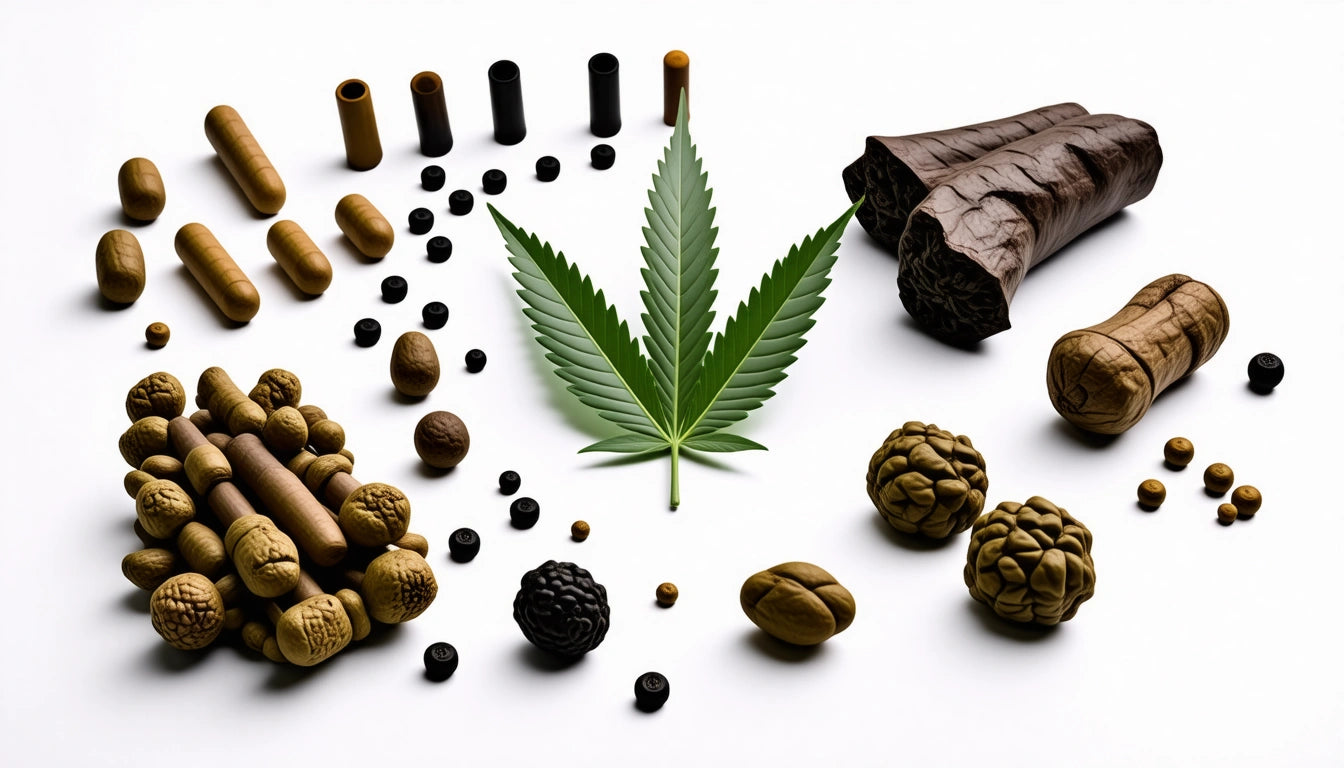
compliance
How Much THC Is in a Typical Joint?
Table of Contents
Understanding THC Content in Joints
Calculating THC Milligrams in a Joint
Factors Affecting THC Content in Joints
THC Per Puff: Breaking Down Consumption
Comparing Joints to Other Consumption Methods
Practical Dosing Tips for Joint Consumers
Understanding how much THC is in a joint is essential for both recreational users and medical patients seeking consistent dosing. While the answer varies based on several factors, including cannabis potency and joint size, having a general understanding of THC content helps consumers make informed decisions about their consumption.Understanding THC Content in JointsA typical joint contains approximately 0.3 to 1 gram of cannabis flower. The THC content in that flower can vary dramatically depending on the strain and growing conditions. Modern cannabis strains commonly contain between 15% to 25% THC by weight, though some premium strains may reach 30% or higher.According to research on joint milligram content, the average joint in legal markets contains approximately 60-150mg of THC, assuming average potency cannabis. This wide range reflects the significant variation in both joint size and cannabis potency available to consumers.Calculating THC Milligrams in a JointTo determine how many mg of THC is in a joint, you need to know both the weight of cannabis used and its THC percentage. The formula is straightforward:THC (mg) = Weight of cannabis (mg) × THC percentageFor example:
A 0.5g joint using 20% THC cannabis contains: 500mg × 0.20 = 100mg THC
A 0.7g joint using 15% THC cannabis contains: 700mg × 0.15 = 105mg THC
A 1g joint using 25% THC cannabis contains: 1000mg × 0.25 = 250mg THC
It's worth noting that studies on joint content suggest that the average joint size in the United States is closer to 0.32g, which would yield approximately 48-80mg THC for average potency cannabis.Highlight: The average joint contains between 60-150mg of THC, though this varies widely based on the size of the joint and the potency of the cannabis used.Factors Affecting THC Content in JointsCannabis Potency VariationsModern cultivation techniques have dramatically increased the potency of cannabis over the past few decades. While cannabis from the 1970s averaged around 3-5% THC, today's commercial strains routinely exceed 20%. This means that a joint rolled today likely contains significantly more THC than one rolled with the same amount of cannabis decades ago.Joint Size and Rolling TechniqueThe amount of cannabis used in a joint varies considerably based on personal preference and rolling technique. Standard measurements indicate that pre-rolled joints in dispensaries typically contain between 0.5g and 1g of cannabis, though some specialty products may contain more.Combustion EfficiencyNot all THC in a joint makes it into the user's system. During combustion, a significant portion of THC is destroyed by heat or lost in sidestream smoke. Research suggests that only about 20-37% of the total THC content is actually inhaled, with even less being absorbed into the bloodstream.THC Per Puff: Breaking Down ConsumptionFor those wondering how much THC in one puff of a joint, the answer depends on several variables including puff volume, duration, and the joint's burning characteristics. As a rough estimate, if a 100mg THC joint is consumed in 10 equal puffs, each puff would deliver approximately 10mg of THC, though absorption efficiency varies.Proper storage is essential for maintaining potency. Using secure storage containers with child-resistant lids not only keeps cannabis products fresh but also ensures they remain safely out of reach of children, a critical safety consideration for responsible consumers.Comparing Joints to Other Consumption MethodsWhen comparing joints to other consumption methods, it's important to understand the differences in bioavailability and onset time. Research comparing edibles to joints shows that inhaled cannabis typically has a bioavailability of 10-35%, while edibles have much lower bioavailability at 4-12%.This means that 10mg of THC consumed in a joint will produce different effects than 10mg consumed in an edible. Joints provide faster onset (within minutes) but shorter duration (1-3 hours), while edibles take longer to take effect (30-90 minutes) but last significantly longer (4-8 hours).Practical Dosing Tips for Joint ConsumersFor those concerned about precise dosing, consider these practical approaches:
Start with smaller joints (0.3-0.5g) if you're sensitive to THC
Consider using a one-hitter or pipe for more controlled consumption
Take fewer, smaller puffs and wait between them to gauge effects
Select lower-THC cannabis strains (10-15%) for milder effects
Mix CBD-rich flower with THC-rich flower to moderate the high
Understanding how long effects last is also crucial for planning consumption. Effects typically peak within 30 minutes of smoking and may last 1-3 hours, though residual effects can persist longer.For those concerned about drug testing, be aware that even a single joint can result in a positive test, with detection times varying based on frequency of use and individual metabolism.Future of THC Measurement and Consumption StandardsAs cannabis legalization expands, we're likely to see more standardized measurement and labeling of THC content in pre-rolled joints. Similar to how alcohol content is clearly labeled on beverages, cannabis products are increasingly providing detailed cannabinoid profiles to help consumers make informed choices.The future may also bring more sophisticated consumption tools that allow for precise dosing of inhaled cannabis, moving beyond the relatively imprecise nature of joint smoking. For now, understanding the basic principles of how to calculate THC content in your joint remains the best approach to responsible consumption.Whether you're an occasional user or a regular consumer, knowing how many mg of THC is in your joint helps ensure a predictable and enjoyable experience while minimizing unwanted effects from overconsumption.
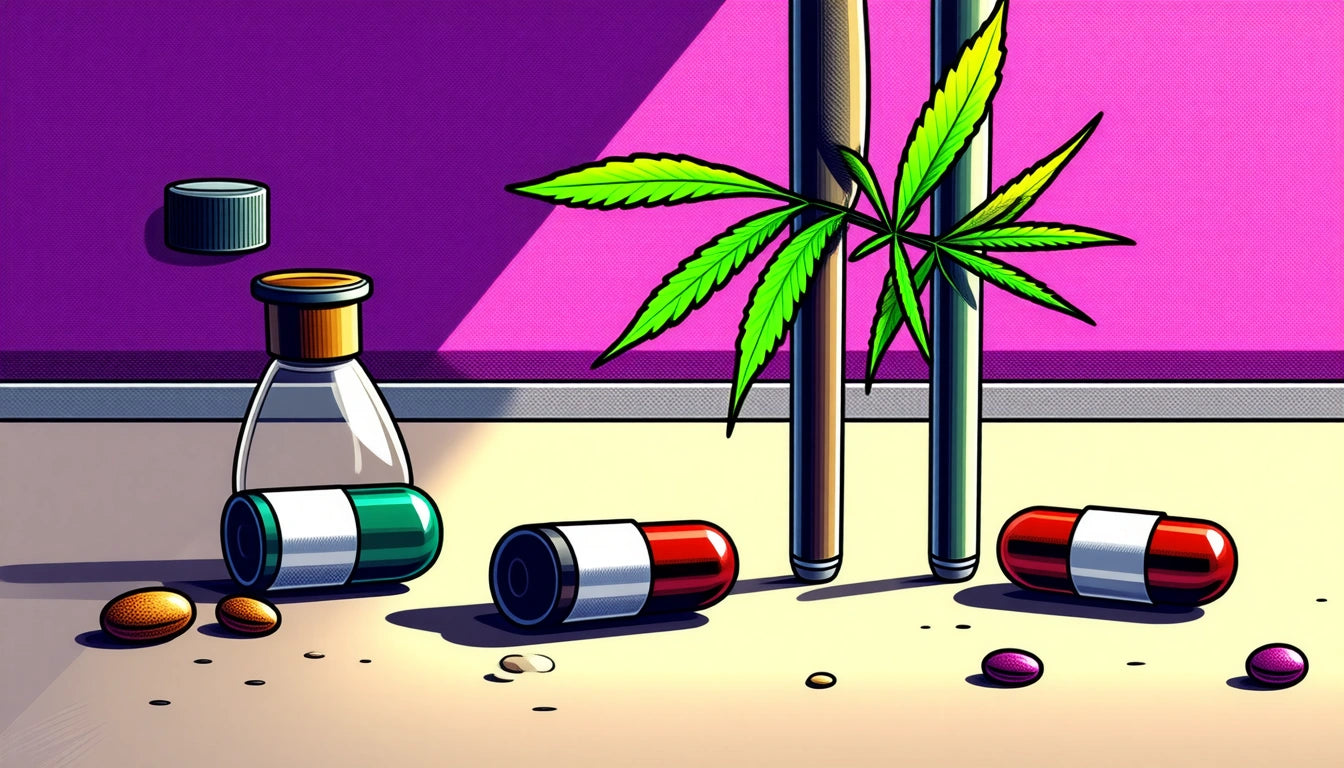
compliance
Can Smoking One Joint Affect Your Drug Test Results?
Table of Contents
THC Content in a Typical Joint
Detection Windows for Cannabis in Drug Tests
Types of Drug Tests and Their Sensitivity
Factors That Influence Detection
Occasional vs. Regular Users: Different Outcomes
Strategies for Minimizing Detection Risk
The question of whether smoking a single joint will show up on a drug test is common among occasional cannabis users. While the simple answer is that yes, even one joint can potentially trigger a positive result, the reality is more nuanced and depends on multiple variables including test type, timing, and individual physiology.THC Content in a Typical JointTo understand detection risk, it's important to know how much THC you're consuming. A typical joint contains approximately 0.3 to 0.5 grams of cannabis, though this can vary widely. With modern strains averaging 15-20% THC content, a single joint might deliver anywhere from 45 to 100mg of THC into your system.The potency of cannabis products has increased substantially over the years. According to research on joint potency, today's cannabis can be three times stronger than what was available in the 1990s, meaning even small amounts can introduce significant THC into your bloodstream.Detection Windows for Cannabis in Drug TestsTHC metabolites, primarily THC-COOH, remain in your system long after the psychoactive effects wear off. Here's how long cannabis typically remains detectable:
Urine tests: 3-30 days (depending on usage frequency)
Blood tests: 1-2 days for occasional users, up to 7 days for regular users
Saliva tests: 24-72 hours
Hair tests: Up to 90 days (requires regular use to detect)
For a single joint, an occasional user might test positive on a urine test for 3-4 days, though this window can be shorter or longer based on individual factors.Highlight: Even one joint can potentially trigger a positive drug test result for up to 3-4 days in occasional users, with detection times varying based on test type and individual metabolism.Types of Drug Tests and Their SensitivityDifferent testing methods have varying sensitivity levels:Urine TestsThe most common screening method, urine tests typically have a THC-COOH threshold of 50 ng/mL for initial screening, with confirmation tests using a lower threshold of 15 ng/mL. A single joint could potentially put an occasional user above these thresholds for several days.Blood TestsThese measure active THC rather than metabolites, making them better indicators of recent use. Blood tests are less common for employment screening but more frequent in situations involving impairment assessment.Saliva TestsThese detect recent use (within 24-72 hours) and are becoming more popular for roadside testing. A joint smoked the evening before could potentially trigger a positive result the next morning.Hair TestsWhile highly sensitive for long-term detection, hair tests typically don't effectively capture single-use events. They're designed to identify patterns of regular use over months rather than isolated incidents.When preparing cannabis products for testing, proper storage is essential. Many professionals use specialized child-resistant caps and containers to maintain sample integrity and prevent contamination before laboratory analysis.Factors That Influence DetectionSeveral variables affect how long THC remains detectable after smoking a single joint:
Metabolism rate: Individuals with faster metabolisms tend to clear THC more quickly
Body fat percentage: THC is fat-soluble, so higher body fat can lead to longer detection windows
Hydration level: Well-hydrated individuals may dilute urine concentration (though this doesn't eliminate metabolites)
Joint potency: Higher THC content leads to more metabolites and potentially longer detection
Smoking method: Different smoking methods affect THC absorption rates
Occasional vs. Regular Users: Different OutcomesFor someone who hasn't used cannabis in months, a single joint will likely clear their system much faster than for a regular user. This is because THC accumulates in fat cells over time with repeated use.Regular users develop a buildup of THC metabolites that can take weeks to fully clear. Even after abstaining, these stored metabolites gradually release back into the bloodstream and appear in urine tests. Therefore, a regular user who smokes just one joint before a test faces a much higher detection risk than a true occasional user.Understanding joint composition and potency can help users make more informed decisions about consumption, especially if they may face testing.Practical Considerations for Testing SituationsIf you're concerned about an upcoming drug test after smoking a joint, consider these practical points:
The more time between consumption and testing, the better your chances of passing
Hydration and exercise may help, but their effects are limited and not guaranteed
Home test kits can provide preliminary results but may not match lab sensitivity
Attempting to cheat tests with additives or substitution carries significant risks
Being informed about cannabis storage and discretion is important for legal compliance
The safest approach is always abstinence well before any anticipated testing period. For those using cannabis medicinally in legal states, it's advisable to inform testing authorities and provide documentation of legal medical use where applicable.While a single joint presents a lower risk than regular use, the only way to guarantee a negative result is to abstain from cannabis completely for a sufficient period before testing. Understanding these factors can help individuals make informed decisions about cannabis use in contexts where testing may occur.
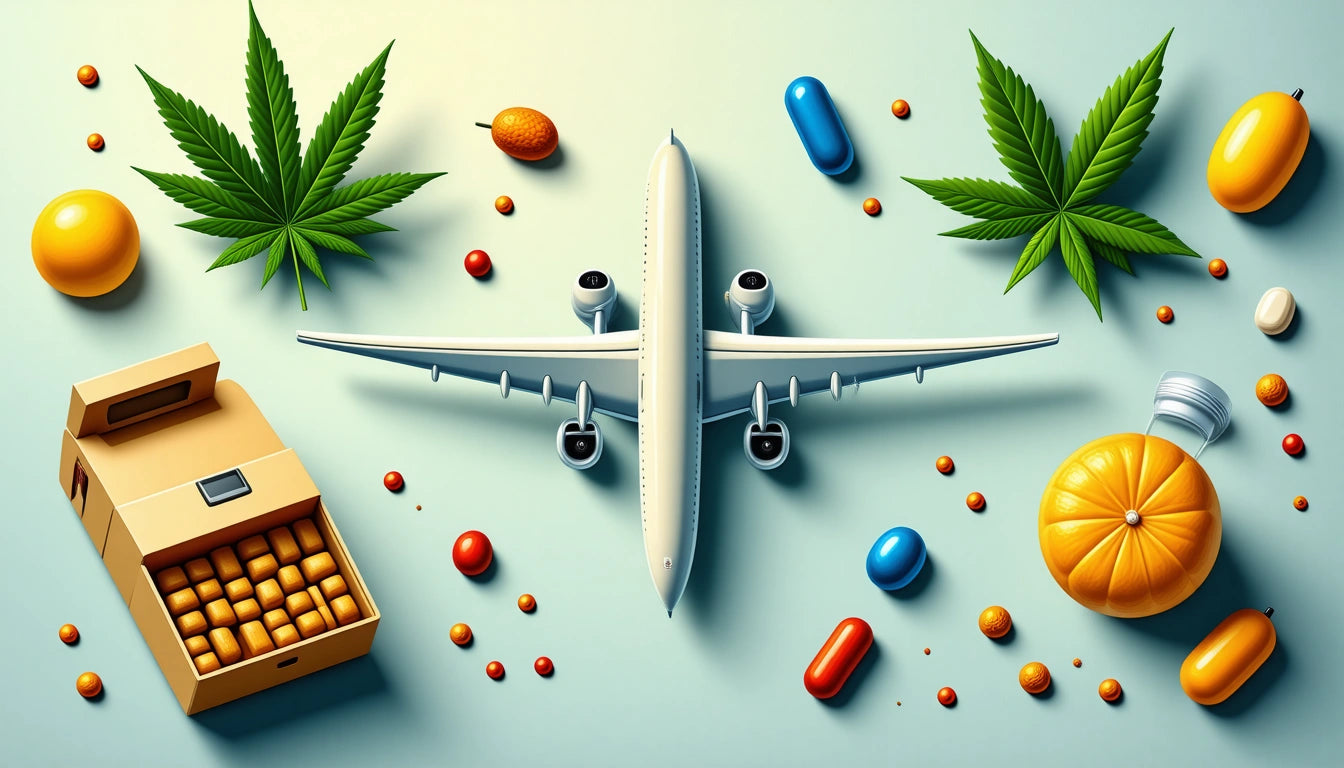
compliance
Can You Bring Pre-Rolls on a Plane?
Table of Contents
Federal Regulations and Pre-Rolls: What You Need to Know
TSA Guidelines for Cannabis Products
Domestic Flights: State-to-State Considerations
International Travel with Cannabis Products
Storage Solutions for Traveling with Pre-Rolls
Legal Alternatives When Traveling
Traveling with cannabis products like pre-rolls has become a common question as legalization spreads across states. The short answer to whether you can bring pre-rolls on a plane is complex: while technically prohibited under federal law, the reality involves various nuances regarding enforcement, state laws, and specific circumstances.Federal Regulations and Pre-Rolls: What You Need to KnowUnder federal law, cannabis remains a Schedule I controlled substance, making it illegal to transport across state lines regardless of the legality in your departure or arrival state. This classification applies to all cannabis products, including pre-rolls, edibles, and concentrates.According to guidelines on bringing pre-rolls through TSA, federal air space falls under federal jurisdiction, creating a legal gray area even when traveling between two states where cannabis is legal.TSA Guidelines for Cannabis ProductsThe Transportation Security Administration (TSA) has stated that their primary focus is security threats, not searching for cannabis products. However, if discovered during routine screening, TSA agents are required to report potential violations of law to local law enforcement.This creates a situation where enforcement can vary significantly depending on:
The airport you're departing from
The specific TSA agents you encounter
Local law enforcement policies
The quantity of cannabis products
Some airports in legal states have adopted more lenient approaches, with certain locations even providing amnesty boxes where travelers can dispose of cannabis products without penalty before security screening.Highlight: While TSA doesn't specifically search for cannabis, they must report it to law enforcement if discovered during screening.Domestic Flights: State-to-State ConsiderationsWhen flying between states where cannabis is legal, travelers should understand that they're still technically violating federal law. Guidelines for traveling with pre-rolls emphasize that checked baggage undergoes screening processes that can detect cannabis products.The risk increases significantly when traveling to states where cannabis remains illegal, as you could potentially face criminal charges upon arrival if discovered with pre-rolls or other cannabis products.Medical Cannabis ConsiderationsMedical cannabis patients face additional challenges. While some states offer reciprocity for out-of-state medical cards, this doesn't override federal transportation laws. Patients should research destination state laws thoroughly before considering travel with medicinal cannabis products.International Travel with Cannabis ProductsInternational travel with cannabis products, including pre-rolls, presents even greater legal risks. Many countries maintain strict drug laws with severe penalties for cannabis possession. Understanding pre-roll travel regulations is essential before considering international transport.Even when traveling to countries that have legalized cannabis, international borders and customs enforcement operate under different legal frameworks that typically prohibit cannabis transportation.Storage Solutions for Traveling with Pre-RollsFor those in situations where travel with pre-rolls is permitted (such as within state boundaries by car), proper storage becomes important. Safety considerations for pre-rolls highlight the importance of proper containment.Our secure packaging solutions with child-resistant features provide discreet, odor-controlling options that help maintain product freshness while preventing accidental access. These containers are designed to meet compliance standards while providing practical functionality for consumers.Proper storage considerations include:
Airtight containers to preserve freshness and control odor
Child-resistant packaging for safety and compliance
Crush-proof options to maintain product integrity
Discreet designs that don't attract unnecessary attention
Legal Alternatives When TravelingRather than risking legal complications by bringing pre-rolls on a plane, consider these alternatives:Research Destination OptionsIf traveling to a state with legal cannabis, research local dispensaries at your destination. Many travelers find this approach simpler and legally safer than attempting to transport products across state lines.Hemp-Derived AlternativesSome hemp-derived CBD products containing less than 0.3% THC are federally legal and may be permissible for air travel. However, these products should be properly labeled and accompanied by certificates of analysis when possible.Understanding pre-roll alternatives can help travelers make informed decisions about their options when traditional cannabis products aren't feasible for travel.Practical Travel Advice for Cannabis ConsumersThe safest approach regarding whether you can bring pre-rolls on a plane remains straightforward: federal law prohibits transporting cannabis across state lines, including via air travel. Despite varying enforcement priorities and changing state laws, air travelers should understand they assume significant legal risk when attempting to bring cannabis products onto flights.For those who use cannabis medicinally or recreationally, planning ahead for trips by researching local laws and available options at your destination represents the most prudent approach to avoiding potential legal complications while still meeting your needs.

